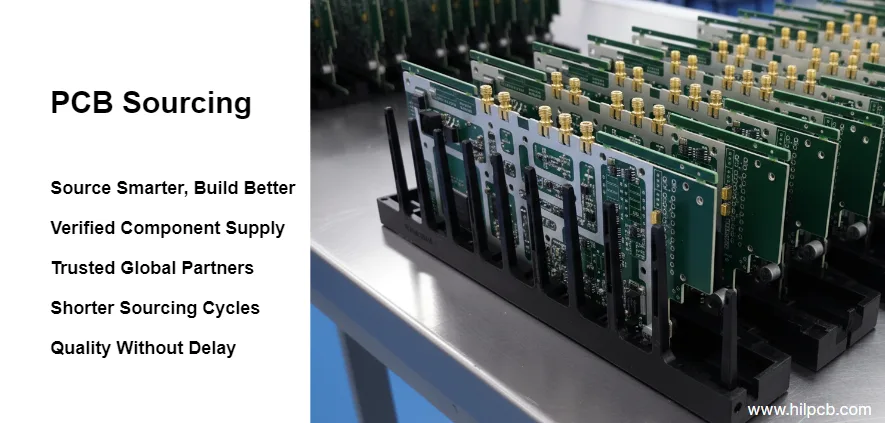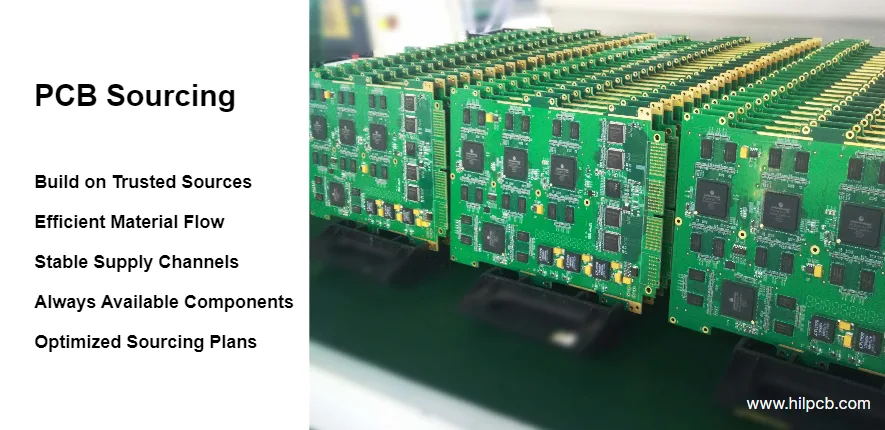In the world of electronics manufacturing, PCB sourcing is one of the most critical decisions a company can make. The right supplier can strengthen your production flow, improve lead times, and ensure product reliability. On the other hand, poor sourcing choices often lead to inconsistent quality, missed deadlines, and rising costs. Effective PCB sourcing is not just about finding the lowest price—it is about building long-term, transparent relationships with manufacturers that consistently deliver performance and trust.
1. Understanding PCB Sourcing and Its Role in Modern Manufacturing
PCB sourcing refers to identifying and managing manufacturing partners that can produce printed circuit boards at the required quality, cost, and lead time. It is a fundamental part of supply chain strategy that determines how efficiently a company can turn product concepts into reality. A structured sourcing process reduces procurement costs, ensures consistent delivery, and builds resilience against market fluctuations.
In modern electronics, supplier relationships extend beyond basic transactions. Manufacturers that align with your business values and technical standards become integral partners in product development. Whether you are producing high-frequency communication boards or standard consumer-grade circuits, effective sourcing sets the foundation for reliability and long-term profitability.
2. How to Identify Reliable PCB Suppliers
Finding a trustworthy PCB supplier begins with understanding what defines “reliability.” A capable manufacturer combines technical expertise, quality assurance, and operational stability. Before reaching out, define your requirements clearly, including board type, volume, and quality expectations. This helps narrow the search and ensures meaningful discussions with potential partners.
Reliable PCB suppliers can be found through verified industry platforms, trade fairs such as Productronica and IPC APEX EXPO, or professional directories like PCB Directory. When reviewing candidates, pay attention to certifications such as ISO 9001 and UL, customer case studies, and years of experience. Evaluate not only their equipment list but also their communication responsiveness and transparency.
A focused shortlist of three to five manufacturers is typically ideal. This allows for in-depth comparison of technical capabilities, pricing, and delivery reliability without overcomplicating the evaluation process. A smaller pool also fosters stronger initial communication and a more accurate understanding of production strengths.

3. Evaluating Supplier Capabilities and Production Capacity
Once you have narrowed your options, a detailed capability assessment is essential. Request each supplier’s manufacturing profile, including minimum trace width, supported materials, layer count, and special processes such as impedance control or blind via drilling. Understanding these parameters early prevents costly redesigns later.
If feasible, arrange an on-site visit or virtual factory tour. Pay attention to equipment condition, cleanliness, process control, and employee expertise—these are strong indicators of consistent quality. A mature manufacturer should be able to demonstrate process traceability and provide quality reports upon request.
Beyond technical capabilities, consider production capacity and financial health. A factory that is overbooked may struggle to meet deadlines, while one with insufficient workload may face instability. Ask about average monthly output, major customers, and on-time delivery records. Financial transparency and sustainable growth are signs of a supplier capable of supporting long-term cooperation. For additional insight, review how suppliers manage delivery reliability and communication, as outlined in our PCB procurement article.
4. Balancing Global Sourcing with Cost, Lead Time, and Risk
Global sourcing can significantly reduce production costs, particularly when working with Asia-based PCB manufacturers. However, a low unit price does not always translate into the best total value. When comparing domestic and overseas suppliers, it is essential to weigh cost against speed, communication, and risk exposure.
Overseas suppliers often provide competitive pricing and a broad range of production capabilities. Yet longer logistics routes, customs procedures, and potential time zone gaps can increase lead times. Local suppliers, in contrast, offer faster turnaround, simplified communication, and easier quality control. Choosing the right mix between global and regional sources often provides the most effective balance of cost and reliability.
When analyzing total expenses, consider all hidden costs such as international freight, duties, taxes, and PCB inventory holding charges. The true total cost of ownership (TCO) is often higher than the quoted unit price, and accurate forecasting prevents budget overruns. A strategic sourcing plan should aim to reduce both financial and operational risks while maintaining flexibility across markets.

5. Building Strong and Sustainable Supplier Relationships
Selecting a supplier is only the beginning of successful PCB sourcing. Sustainable relationships are built through consistent performance monitoring, transparent communication, and shared improvement goals. A long-term partner understands your standards, anticipates challenges, and collaborates to improve processes.
Establish measurable performance indicators such as defect rate, on-time delivery, and response time. Review these metrics regularly to identify trends and areas for improvement. Continuous feedback fosters accountability and mutual trust. Engage in joint design reviews or engineering discussions to reduce PCB cost and optimize PCB lead time.
Suppliers that demonstrate reliability and innovation deserve recognition and growth opportunities. This not only strengthens collaboration but also encourages a shared commitment to quality and operational excellence. Over time, strong partnerships transform transactional relationships into true strategic alliances.
6. Enhancing Sourcing Efficiency and Managing Risk
Supply chain stability depends on proactive risk management and diversification. Relying on a single PCB supplier can expose you to unexpected disruptions such as equipment failure, material shortages, or logistical delays. Developing a dual-sourcing strategy provides flexibility and ensures continuity during unforeseen challenges.
To enhance efficiency, implement clear communication protocols and real-time order tracking. Regular audits covering quality, delivery performance, and financial stability help identify potential risks before they escalate. Encourage suppliers to participate in continuous improvement programs, technical training, and collaborative innovation projects.
By managing sourcing data systematically and maintaining open dialogue with your partners, you can improve transparency, forecast accuracy, and production resilience. For broader supply chain strategies, explore our insights in PCB supply chain.
Frequently Asked Questions About PCB Sourcing
How many suppliers should I evaluate before making a decision?
Typically, evaluating three to five suppliers is sufficient for most sourcing programs. This allows meaningful comparison while keeping communication efficient.
What is the most important factor in choosing a PCB manufacturer?
Consistent quality and delivery reliability are critical. Price matters, but long-term stability, technical expertise, and after-sales support create real value.
Should I source locally or internationally?
Domestic sourcing offers faster lead times and easier communication, while international suppliers provide lower costs for large-scale production. The best choice depends on your priorities and project stage.
How can I reduce PCB sourcing risks?
Maintain at least two qualified suppliers, perform regular audits, and keep open communication channels. Diversification reduces dependency and ensures supply continuity.
When is it time to switch suppliers?
Persistent quality issues, repeated delivery delays, or lack of transparency are strong indicators that a supplier may no longer align with your business needs.

